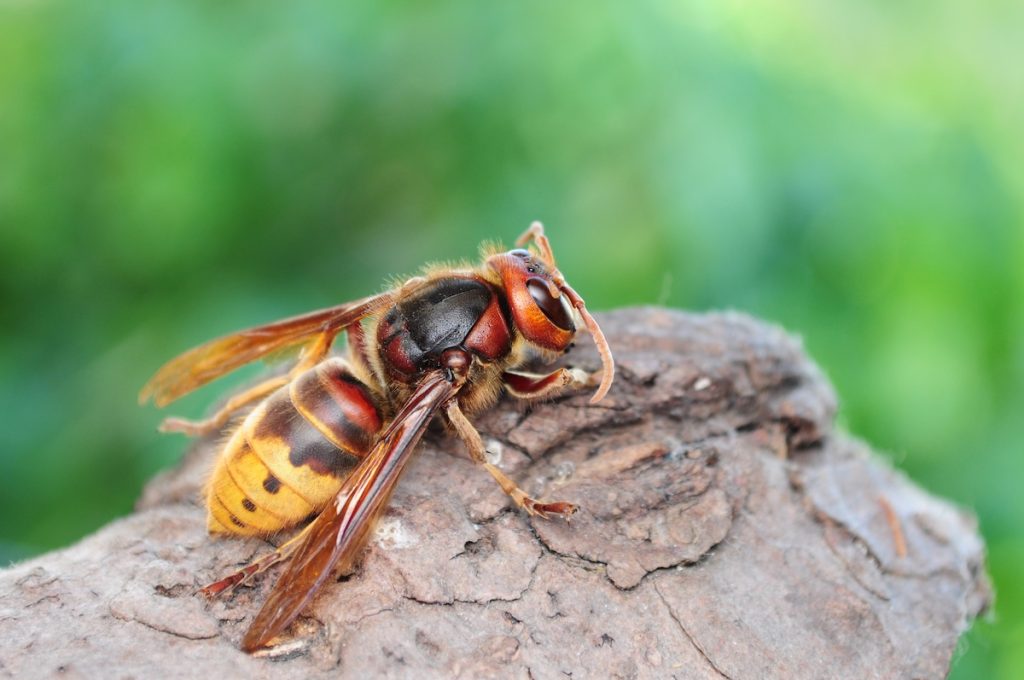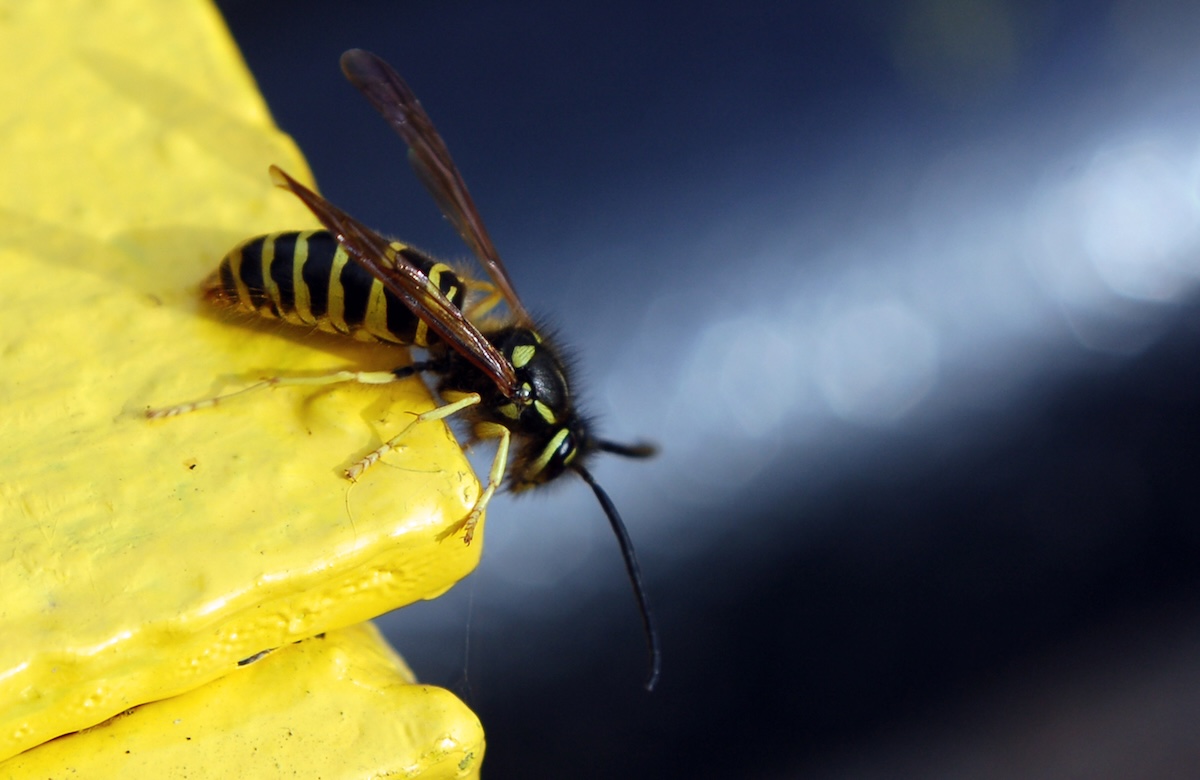As summer winds down, homeowners across St. Louis face an increasingly aggressive threat buzzing around their properties. Late summer marks peak activity for wasps and hornets. Accordingly, this becomes the most crucial time to implement effective pest control tips. These stinging insects become more territorial and desperate for food sources. Consequently, they create dangerous situations for families enjoying their outdoor spaces.
Trust Omni Pest Solutions to guide you through the essential strategies needed to protect your home during this challenging season!
Why Do Wasps and Hornets Become More Aggressive in Late Summer?
Have you ever wondered why these flying menaces seem particularly hostile as autumn approaches? Late summer triggers a dramatic shift in wasp and hornet behavior patterns.
During this period, their natural food sources begin to diminish significantly. These sources primarily include tree sap and nectar. Furthermore, colonies reach their maximum size. They now house thousands of aggressive workers competing for dwindling resources. As a result, this scarcity drives them to seek alternative food sources. They often head directly to human gatherings and outdoor dining areas.
Understanding Peak Colony Activity
The lifecycle of wasps and hornets reaches its zenith during late August and September. Queen wasps have spent the entire summer building their colonies. These colonies now contain the highest number of workers. Moreover, these workers become increasingly protective of their nests. They prepare for winter survival during this time.
Temperature fluctuations also contribute to heightened aggression levels. Cooler evenings and warmer days create stress within the colony. Therefore, encounters with humans become more volatile and unpredictable.
What Are the Most Effective Wasp Removal Strategies?
When should you attempt DIY wasp removal versus calling professionals? Understanding the risks and limitations of various removal methods can save you from painful stings and property damage.
Professional wasp removal services offer specialized equipment and protective gear that homeowners typically lack. Additionally, experts can identify nest locations that may be hidden within wall voids, underground burrows, or high tree branches.
Safe DIY Prevention Methods
- Eliminate food sources: Remove fallen fruit, clean outdoor dining areas thoroughly, and secure garbage cans with tight-fitting lids
- Seal entry points: Inspect your home’s exterior for cracks, gaps, and openings that could harbor nests
- Remove water sources: Fix leaky outdoor faucets and eliminate standing water around your property
However, never attempt to remove active nests yourself! Professional intervention becomes essential when dealing with established colonies, particularly for hornet removal situations.
How Does Hornet Removal Differ from Standard Wasp Control?
Are hornets simply larger wasps, or do they require specialized removal techniques? Hornets present unique challenges that distinguish them from their smaller wasp cousins.
Hornets are significantly larger and more aggressive than typical wasps. Their stings contain higher concentrations of venom, making encounters potentially dangerous for individuals with allergies. Additionally, hornet nests can house up to 700 workers, compared to typical wasp colonies of 15,000.
Professional Hornet Removal Considerations
Hornet removal requires enhanced safety protocols and specialized equipment. These insects can sting multiple times without losing their stinger, unlike bees. Furthermore, they release alarm pheromones when threatened, potentially triggering mass attacks from nearby colony members.
Professional pest control technicians use protective suits rated for multiple stings and employ targeted treatment methods that eliminate entire colonies effectively. This approach prevents surviving members from rebuilding in the same location.
Which Prevention Methods Work Best for Long-Term Control?
What steps can homeowners take now to prevent next year’s infestations? Implementing comprehensive pest control tips during late summer sets the foundation for year-round protection.
Fall preparation involves more than just removing current threats — it requires strategic planning for next season’s prevention. Consequently, this timing allows homeowners to address structural vulnerabilities before wasps and hornets emerge in spring.
Year-Round Prevention Strategies

Landscaping modifications play a crucial role in long-term control. Remove overgrown vegetation near your home’s foundation, trim tree branches away from rooflines, and eliminate dense shrubs that provide nesting sites.
Structural improvements include sealing cracks in exterior walls, repairing damaged screens, and installing proper ventilation in attics and crawl spaces. These modifications reduce available nesting sites while improving your home’s overall integrity.
Regular property inspections during early spring help identify emerging colonies before they become established. Early intervention requires less aggressive treatment methods and reduces overall costs.
When Should You Call Professional Pest Control Services?
How do you know when a wasp or hornet problem exceeds DIY capabilities? Several warning signs indicate the need for immediate professional intervention.
Multiple nests on your property suggest a larger infestation that requires comprehensive treatment. Moreover, aggressive behavior near entry points to your home indicates colonies feel threatened and may attack family members or pets.
Emergency Situations Requiring Immediate Action
- Indoor nest discovery: Wasps or hornets inside your home require immediate professional attention
- Allergic reactions: Any family member with known sting allergies should never attempt DIY removal
- Large nest sizes: Nests larger than a softball contain thousands of aggressive defenders
- Multiple daily encounters: Frequent sightings suggest nearby colonies that pose ongoing threats
Professional pest control technicians possess the expertise to assess infestation severity and implement appropriate treatment strategies safely and effectively.
Essential Pest Control Tips for Protecting Your Family
What immediate actions can homeowners take to reduce sting risks while awaiting professional treatment? Several practical measures provide temporary protection during peak activity periods.
Create safe zones around your home by avoiding known flight paths and nest locations. Additionally, time outdoor activities for early morning hours when wasps and hornets are less active.
Protective Measures for Outdoor Activities
Clothing choices significantly impact your safety during outdoor activities. Wear light-colored, smooth-textured fabrics that don’t attract insects or provide surfaces for them to grip. Avoid floral patterns and bright colors that may trigger territorial responses.
Behavioral modifications include moving slowly around suspected nest areas, avoiding sudden movements, and never swatting at flying insects. These actions prevent triggering defensive behaviors that lead to painful encounters.
Keep windows and doors closed during peak activity hours, particularly when cooking or eating indoors. Sweet aromas can attract wasps and hornets from considerable distances — creating indoor invasion scenarios that endanger your family.
Get Professional Pest Control Tips from Omni Pest Solutions Today!
Don’t let wasps and hornets ruin your final weeks of summer enjoyment! Our experienced technicians understand the unique challenges St. Louis homeowners face during peak stinging insect season. We provide comprehensive assessment services, safe removal techniques, and long-term prevention strategies tailored to your property’s specific needs.
Contact Omni Pest Solutions today for expert wasp removal and hornet removal services that protect your family’s safety and peace of mind.

